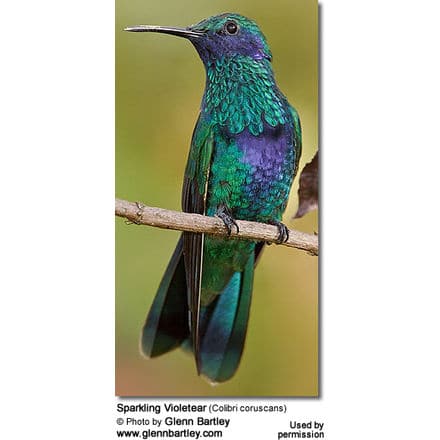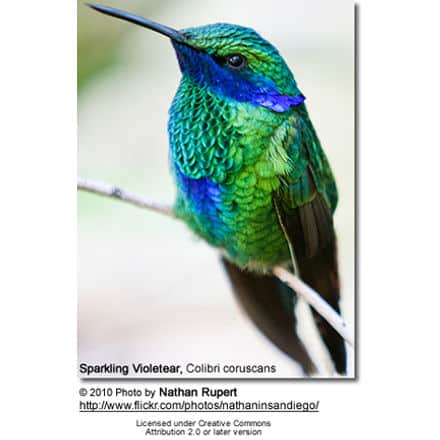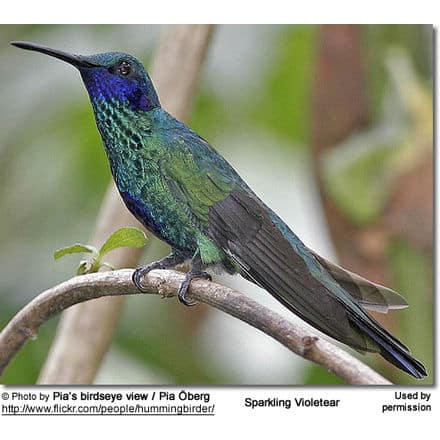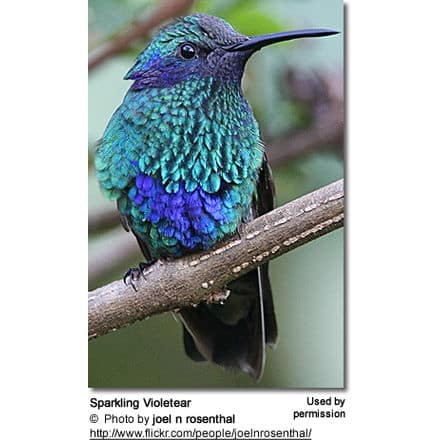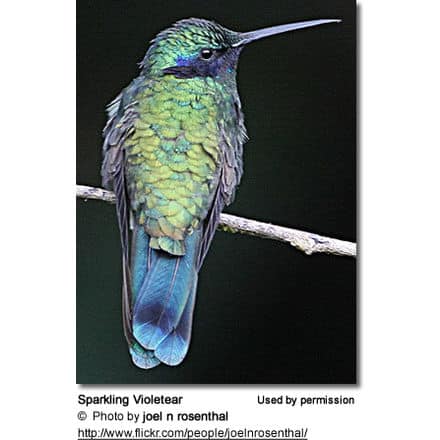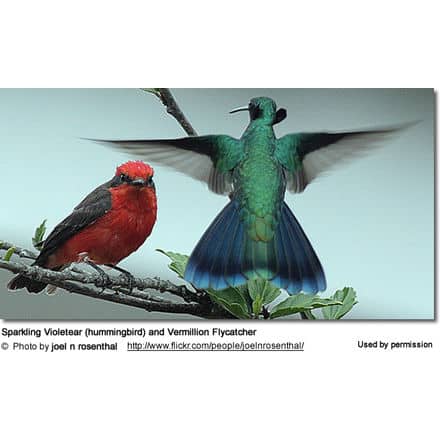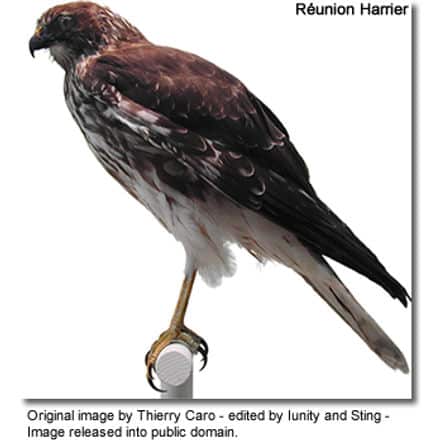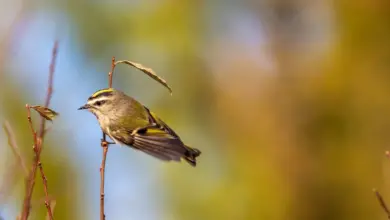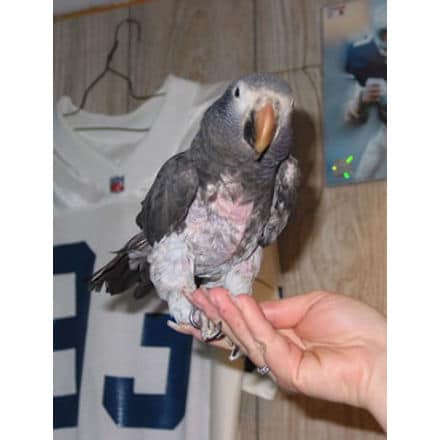Sparkling Violetears (Colibri coruscans)
The Sparkling Violetears is a South American hummingbird that is widespread in the highlands of northern and western South America. Many believe it to be the commonest hummingbird species within its range.
The Sparkling Violetears (Colibri coruscans) is a South American hummingbird that is widespread in the highlands of northern and western South America. Many believe it to be the commonest hummingbird species within its range.
Other Common and Global Names:
Other English Common Names: Colombian Violetear, Gould’s Violetear, Chequered Violetear; Spanish: Colibrí Chillón, Colibrí grande, Colibrí Rutilante, Colibrí Verde Mayor, Picaflor azul, Picaflor de cara azul; Portuguese: Beija-flor-violeta; French: Anaïs, Anaïs Colibri à oreillons violets, Colibri à oreillons violets, Colibri anaïs; German: Großer Veilchenohrkolibri, Veilchenohr; Italian: Colibrì orecchieviola scintillante, Guanciaviola luccicante; Danish: Glitrende Violetøre; Finnish: Isoorvokkikolibri, iso-orvokkikolibri; Japanese: aomimihachidori; Dutch: Goulds Violetoorkolibrie, Gould-violetoorkolibrie; Norwegian: Fiolørekolibri;Swedish: Violettörad kolibri
Distribution / Ranges
Sparkling Violetears are native to the following South American countries: Argentina, Bolivia, Brazil, Chile, Colombia, Guyana, Peru and Venezuela.
They inhabit a large part of the Andes, from the Venezuelan Coastal Range, the Tepuis of southern Venezuela and adjacent northern Brazil, south to northwestern Argentina. This is the most widely distributed species of hummingbird in the Andes.
They are typically found in semi-open habitats, along the forest edge, open areas with scattered shrubs, gardens, parks within major cities. They don’t usually inhabit deep forests. They are, however, commonly found near evergreen eucalyptus forests as they feed on the flowers of these trees.
Within parts of its range, the Sparkling Violet is an elevational migrant.
Subspecies and Ranges
-
- Colibri coruscans coruscans (Gould, 1846) – Nominate Race
- Range: Northwestern Venezuela and Colombia through Ecuador and Peru to Bolivia and northwestern Argentina. They possibly occur in northern Chile.
-
- Colibri coruscans germanus (Salvin and Godman, 1884)
- Range: Southeastern Venezuela, eastern Guyana and northern Brazil
[Colibri coruscans rostratus] (W. H. Phelps and W. H. Phelps Jr, 1952)
- Range: Mountains of upper Orinoco Valley (Amazonas) in southern VenezuelaNote: ssp rostratus is a disputed subspecies. Some authorities believe it to be one and the same with the “Germanus” subspecies. The physical differences include a longer tail and bill. Subject to verification.
- Colibri coruscans germanus (Salvin and Godman, 1884)
- Buckley’s Violet [Colibri coruscans buckleyi or Colibri buckleyi] (Boucard, 1893). Known only from type specimen from Misqui, Bolivia. It is now considered a melanistic (dark) form of the nominate race. (Cory 1918, Schuchmann et al. 1999).
- Colibri coruscans coruscans (Gould, 1846) – Nominate Race
Description
Sparkling Violetears measure in length from 5.1 to 5.5 inches (13 to 14 cm) – including their tail of about 2.2 inches (5.6 cm). Its black, down-curved bill is about 1 inch (2.5 cm) long. Males weigh between 0.27 to 0.3 ounces (7.7 to 8.5 grams); females weigh between 0.24 to 0.26 ounces (6.8 to 7.4 grams).
They were named for their sparkly bluish purple feathers from their beaks, to their ear feathers, which are long and stiff.
Its upper plumage is glossy green and the lower plumage is mostly green, except for a blue belly. Its tail is aniridescent green with a blue band.
Males and females look alike.
Similar Species: The Sparkling Violetear resembles the Green Violetear; however, the Sparkling Violetear is larger and has a distinct purple-blue chest-spot and chin. Additionally, the Sparkling Violetears mostly occur at higher elevations than the Green Violetear. The Green Violetear also prefers more humid habitats.
Song / Vocalizations
They are very vocal and territorial. They declare their territory by repeating their favorite songs for much of the day. Family groups may develop their own vocalizations.
Nesting / Breeding
The breeding season varies by region. In Venezuela, it ranges from July through October.
Hummingbirds in general are solitary and aggressive, and neither live nor migrate in flocks; and there is no pair bond for this species – the male’s main involvement in the reproductive process is the actual mating with the female. Males court females by flying in a u-shaped pattern in front of them. He will separate from the female immediately after copulation. Typically, male hummingbirds don’t participate in raising the chicks. However, there are a couple of reports of male Sparkling Violetears caring for their young.
The female is responsible for building the cup-shaped nest out of plant fibers woven together and green moss on the outside for camouflage in a protected location in a shrub, bush or tree. She lines the nest with soft plant fibers, animal hair and feather down, and strengthens the structure with spider webbing and other sticky material, giving it an elastic quality to allow it to stretch to double its size as the chicks grow and need more room. The nest is typically found on a low, skinny horizontal branch.
The average clutch consists of two white eggs, which she incubates alone for about 17 to 18 days. The young are born blind, immobile and without any down. The female protects and feeds the chicks with regurgitated food (mostly insects since nectar is an insufficient source of protein for the growing chicks). The chicks leave the nest when they are about 21 days old.
Diet / Feeding
The Sparking Violetear Hummingbirds primarily feed on nectar taken from a variety of brightly colored, scented small flowers of trees, herbs, shrubs and epiphytes. Within their range, they have adapted to feeding on nonnative flowering trees, such as the Eucalyptus.
They favor flowers with the highest sugar content (often red-colored and tubular-shaped) and seek out, and aggressively protect, those areas containing flowers with high energy nectar. They use their long, extendible, straw-like tongues to retrieve the nectar while hovering with their tails cocked upward as they are licking at the nectar up to 13 times per second. Sometimes they may be seen hanging on the flower while feeding.
Many native and cultivated plants on whose flowers these birds feed heavily rely on them for pollination. The mostly tubular-shaped flowers actually exclude most bees and butterflies from feeding on them and, subsequently, from pollinating the plants.
They may also visit local hummingbird feeders for some sugar water, or drink out of bird baths or water fountains where they will either hover and sip water as it runs over the edge; or they will perch on the edge and drink – like all the other birds; however, they only remain still for a short moment.
They also take some small spiders and insects – important sources of protein particularly needed during the breeding season to ensure the proper development of their young. Insects are often caught in flight (hawking); snatched off leaves or branches, or are taken from spider webs. A nesting female can capture up to 2,000 insects a day.
Males establish feeding territories, where they aggressively chase away other males as well as large insects – such as bumblebees and hawk moths – that want to feed in their territory. They use aerial flights and intimidating displays to defend their territories.
Metabolism and Survival and Flight Adaptions – Amazing Facts
Species Research by Sibylle Johnson
Please Note: The articles or images on this page are the sole property of the authors or photographers. Please contact them directly with respect to any copyright or licensing questions. Thank you.


